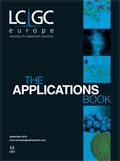GC–TEA Detection of Nitrosamines within Toys and Rubber/Latex Products
The Application Notebook
There are currently over 300 nitrosamine compounds, of which more than 90% are classified as carcinogenic or mutagenic. As a bi-product of many manufacturing processes specific concern has risen from the impact of cumulative exposure.
In rubber and latex manufacturing, accelerators are required during the curing process to speed up the transformation from the liquid state into the form-holding elastic material. This is achieved by increasing the amount of cross-linking within the original material. Typically sulphur cross-linking is utilized, and common accelerators include dithiocarbamate, thiurams, and benzothiazole.
When exposed to atmospheric nitrous oxide, during the mixing or curing processes, these secondary amines undergo nitrosation and produce nitrosamines.
These nitrosamines will remain within the rubber and latex items unless extracted via chemical treatment. Concentration levels found within consumer products are widely variable and potentially continue to leach out.
The focus of this article is to determine a method suitable for nitrosamine analysis with a brief study of nitrosamine levels found in children’s toys and baby paraphernalia. Gas chromatography–mass spectrometry (GC–MS) and liquid chromatography coupled to tandem MS (LC–MS–MS) analysis can be costly to purchase, complex to operate, and analytically complicated (often requiring the use of single ion monitoring to achieve adequate sensitivity). This analysis will focus on the suitability of utilizing a more costâeffective and simpler analysis method employing the long-established technique of gas chromatography–thermal energy analyzer (GC–TEA). Sample preparation was achieved using UK standard method - BS EN 71-12:2013 and co-referencing EN 12868:1999. N-nitrosodiethanolamine (NDELA) was derivatized prior to analysis by the addition of BSTFA+TMCS (CAS no. 25561-30-2).
Discussion/Conclusion
The results listed in Table 1 and illustrated in Figure 1 show how nitrosamines can be successfully separated on an Ellutia 200 Series GC and detected on the 810 Series TEA. The results also show that whilst most products tested showed minimal nitrosamines, N-nitrosodimethylamine (NDMA) and NDELA were present in almost every sample at low levels. Balloons were the only sample to have a positive response for any other nitrosamine, namely N-nitrosodiethylamine (NDEA).
Figure 1: Chromatogram showing separation of common nitrosamines using an Ellutia 810 TEA.

Current U.S. legislation (FDA and CPSC) for nitrosamines recommends that baby products should contain less than 10 μg/kg of any individual nitrosamine per item sold.
This study suggests that further monitoring of nitrosamines within toys and other rubber/latex products is essential. Whilst manufacturers continue to reduce the exposure risk, it is paramount to reduce baby’s and children’s exposure to these carcinogenic compounds through strict monitoring and control.

Ellutia Ltd
12–16 Sedgeway Bus Pk, Witchford, Cambs, CB62HY, UK
Tel: +44 (0)1353 669916 Fax: +44 (0)1353 669917
E-mail: info@ellutia.com Website: www.ellutia.com

Altering Capillary Gas Chromatography Systems Using Silicon Pneumatic Microvalves
May 5th 2025Many multi-column gas chromatography systems use two-position multi-port switching valves, which can suffer from delays in valve switching. Shimadzu researchers aimed to create a new sampling and switching module for these systems.
Studying Cyclodextrins with UHPLC-MS/MS
May 5th 2025Saba Aslani from the University of Texas at Arlington spoke to LCGC International about a collaborative project with Northwestern University, the University of Hong Kong, and BioTools, Inc., investigating mirror-image cyclodextrins using ultra-high performance liquid chromatography–tandem mass spectrometry (UHPLC–MS/MS) and vibrational circular dichroism (VCD).

.png&w=3840&q=75)

.png&w=3840&q=75)



.png&w=3840&q=75)



.png&w=3840&q=75)
















